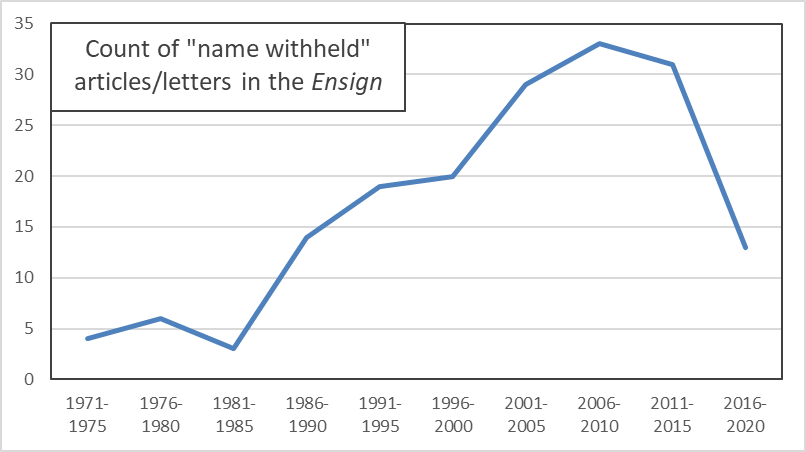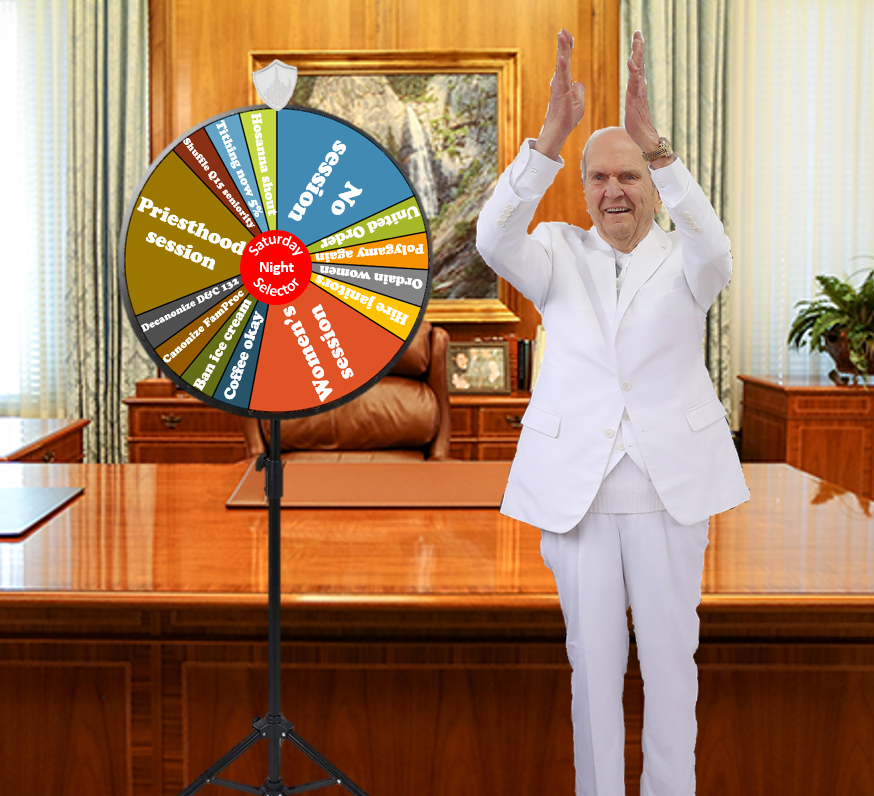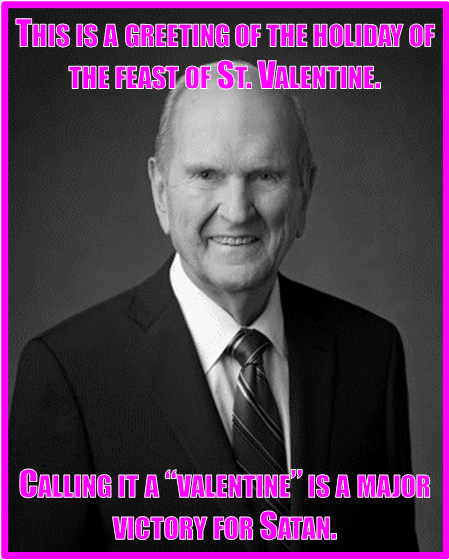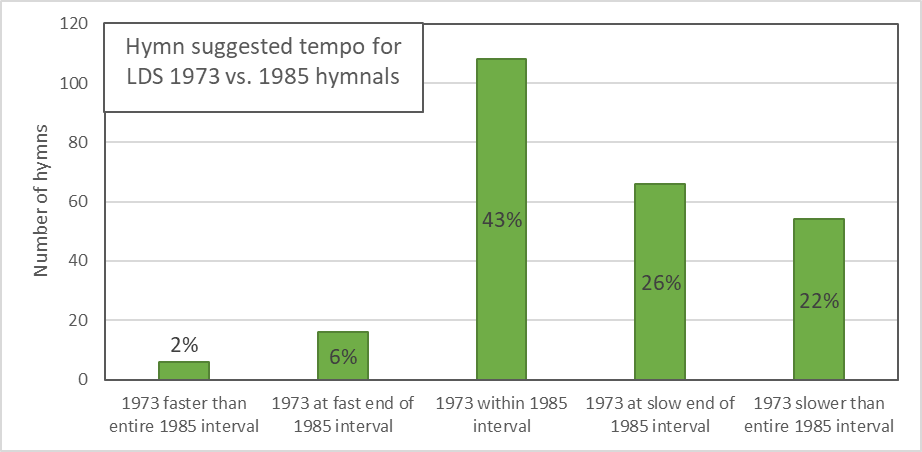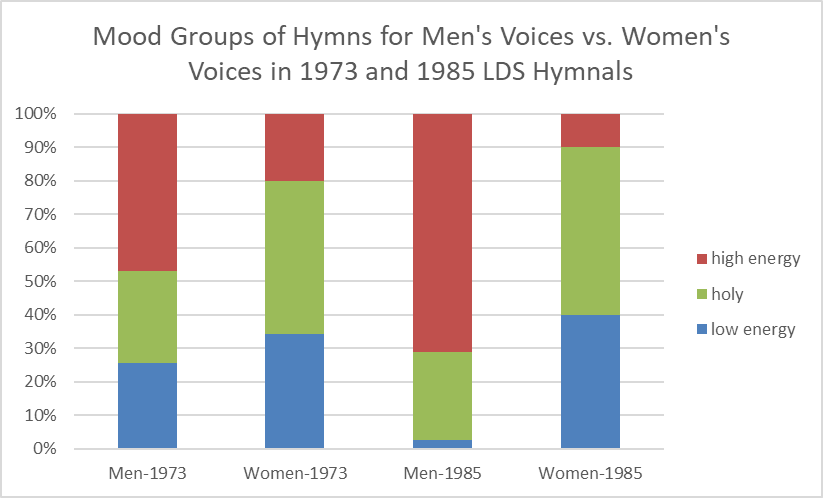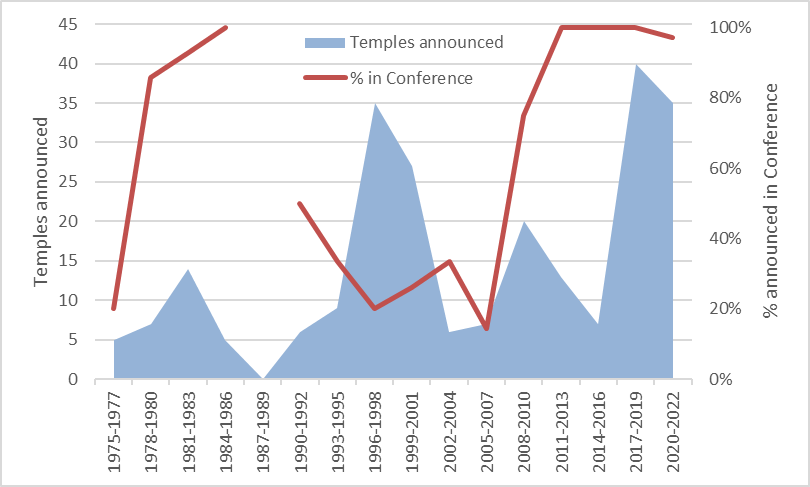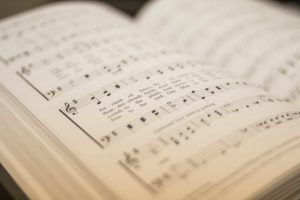Best musical number: “Now Let Us Rejoice” Saturday afternoon. I really enjoyed this arrangement, and it gets bonus points for being so upbeat.
Worst musical number: “Our Prayer to Thee” Sunday afternoon. I’m not familiar with this hymn, but it just sounded way too soft and slow and what I think of as “Mormon reverent,” if that makes sense.
Fastest musical number: “In Hymns of Praise” Sunday afternoon. I didn’t actually check, but this seemed pretty fast to me.
Slowest musical number: “Oh, May My Soul Commune with Thee” Women’s session.
Best choir outfits: I appreciated that the women in the BYU-I choir on Saturday afternoon got to wear a very dark blue rather than a bright or pastel color that women are so often required to wear to show their adherence to divine gender roles.
Longest prayer: Vern P. Stanfill, Sunday afternoon benediction, 105 seconds. This is the second conference in a row where nobody got close to two minutes, which is kind of my rule of thumb for when a prayer starts to feel long.
Shortest prayer: Jan E. Newman, Saturday afternoon benediction, 62 seconds.
Things we don’t talk about:
- Dale G. Renlund built his whole talk around a caution to women to not try to learn more about Heavenly Mother. Or pray to her. Or speculate about her. Or ask for revelation about her. He did stop short of telling them they shouldn’t mention her, but his message was still clear.
- Gary E. Stevenson told a story of women in Poland who left strollers on a train platform for arriving Ukranian refugees who were fleeing the Russian invasion. He said “Poland,” but he couldn’t bring himself to say “Ukraine,” and certainly not “Russia.”
- Russell M. Nelson did manage to say both “Ukraine” and “Russia,” but carefully avoided naming the Russian invasion for what it is, opting instead to vaguely refer to it as “the armed conflict in eastern Europe.”
Best title: Reyna I. Aburto, “We Are The Church of Jesus Christ of Latter-day Saints”. A nice perspective, even if I think it misses the outsized control the GAs have.
Overwrought title: Patrick Kearon, “He Is Risen with Healing in His Wings: We Can Be More Than Conquerors”. I love the talk, but the title is just a bit much.
Trying too hard title: Becky Craven, “Do What Mattereth Most”.
Phoning-it-in title: Dallin H. Oaks, “Introductory Message”.
Talk that should have just been a Church Newsroom post: Dallin H. Oaks opened the Women’s session by explaining that the Saturday night session will be held going forward, but for different purposes at different times. I guess after the canceling and un-canceling of the session last year, the GAs felt like they had to come clean about the Saturday Night Session Selector (in principle, even if not in detail).
Best visual aid: Jeffrey R. Holland showed a note from a young girl who complained that conference is boring, and asked why we do it. It’s only too bad he didn’t actually discuss her question!


